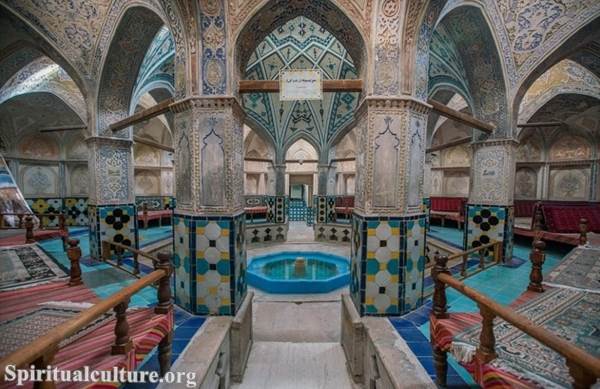Religious calendars do more than just mark dates — they carry centuries of meaning, memory, and identity. This article explores how sacred calendars shape individual lives, social rhythms, and cultural heritage.
From the rising of the sun on a holy day to the quiet fasting at dusk, religious calendars offer more than ritual—they offer rhythm. They mark sacred moments in time, carve space for remembrance, and turn ordinary weeks into seasons of transformation. Every culture that lives by a religious calendar is shaped by its seasons, its cycles, and its silent wisdom.
As Spiritual Culture, we invite you to look deeper into what a religious calendar really means. Why do sacred dates hold such power? How do these time structures influence not only the faithful but also society as a whole—its art, its politics, its family life? This article will walk you through the spiritual, cultural, and communal impact of religious calendars across the world.
The Calendar as Sacred Architecture of Time
A Divine Order to the Days
Every religious calendar is a map of meaning. It doesn’t just tell us what day it is—it tells us what that day means. In a secular calendar, Tuesday might just be a workday. In a sacred calendar, Tuesday might be a fast day, a saint’s feast, or the eve of a holy celebration.
Calendars like the Islamic Hijri, the Hebrew calendar, the Christian liturgical calendar, the Buddhist lunar calendar, and the Hindu Panchang all offer spiritual scaffolding. They name time with sacred significance.
Time as a Reflection of Cosmic Truth
In many traditions, the religious calendar reflects not just human events, but cosmic patterns—lunar phases, harvests, solstices, or mythic moments. The Hindu calendar aligns festivals with planetary movements. The Jewish calendar begins at sunset, echoing the Genesis creation story: “And there was evening, and there was morning…”
Time, in this way, becomes not only chronological but kairological—charged with divine purpose.
How Calendars Shape Community Life
From the Individual to the Collective
When a society follows a shared sacred calendar, it experiences time communally. Fasts are broken together. Festivals are celebrated as one. The calendar becomes a silent unifier, gathering people around shared meaning.
Family Traditions and Generational Memory
Children remember the smell of food from feast days, the clothes they wore for Eid or Easter, the candles lit during Hanukkah or Vesak. These rituals root individuals into a community, and into time itself.
Over generations, the religious calendar becomes a living heritage. It’s not just about what is celebrated—but how it is remembered.
Sacred Calendars and the Seasons of the Soul
Rhythms of Repentance and Renewal
Religious calendars often reflect an inner journey. Lent in Christianity calls for fasting and reflection. Ramadan in Islam disciplines the soul through prayer and abstinence. The Jewish High Holy Days begin with introspection and end in atonement.
These times are not arbitrary. They create sacred spaces in the year where the soul can awaken, heal, and realign with the Divine.
The Power of Anticipation and Return
Advent and Lent in the Christian calendar build anticipation. Navaratri in Hinduism celebrates renewal in cycles. Buddhist Uposatha days help practitioners renew vows regularly. These recurring times teach that the spiritual path is not linear but cyclical—each year offering another chance to return, realign, and remember.
The Influence of Religious Calendars on Culture and Art
Shaping Music, Art, and Storytelling
Religious festivals often inspire music, dance, visual art, and theater. Gregorian chants echo the Christian liturgical seasons. Hindu Holi festivals fill streets with color. Buddhist parades celebrate the Buddha’s birth with luminous floats and golden statues.
Calendars become canvases on which cultural creativity is painted.
Calendar-Based Cultural Identity
Entire regions may orient their school systems, national holidays, and even economic cycles around the religious calendar. In Ethiopia, the Orthodox calendar still determines national rhythms. In Saudi Arabia, the Hijri calendar defines work weeks and state holidays.
Even in secular societies, echoes remain. Christmas shapes the Western winter. Easter shapes the spring. These festivals, though often commercialized, retain a sacred root.
Cross-Cultural Examples of Religious Calendars
The Islamic Hijri Calendar
Based on the lunar cycle, the Hijri calendar begins with the Prophet Muhammad’s migration (Hijrah) from Mecca to Medina. Major dates include:
- Ramadan: a month of fasting, reflection, and prayer
- Eid al-Fitr and Eid al-Adha: times of communal celebration
- Ashura: a solemn day with different meanings for Sunnis and Shi’a
The lunar nature means Islamic months rotate through the seasons, reminding Muslims that sacred time transcends climate and geography.
The Hebrew Calendar
A lunisolar system, it anchors Jewish life with deep historical memory. Key observances include:
- Rosh Hashanah: the New Year, a time of judgment and renewal
- Yom Kippur: the Day of Atonement, marked by fasting and prayer
- Passover (Pesach): a springtime festival of liberation
- Sukkot: a fall celebration of divine shelter and providence
The Hebrew calendar turns remembrance into practice, linking the soul with ancestral stories.
The Christian Liturgical Calendar
Divided into seasons like Advent, Christmas, Lent, and Easter, the Christian calendar narrates the life of Jesus across the year.
- Advent: waiting for Christ
- Lent: 40 days of penance
- Easter: resurrection and new life
- Pentecost: the birth of the Church
Each season reshapes time into sacred story, helping Christians live out the life of Christ, year after year.
The Hindu Panchang and Festival Cycle
A complex lunisolar system, the Hindu calendar includes a wide array of festivals:
- Diwali: the festival of lights
- Navaratri: nine nights of the Goddess
- Holi: celebration of color and joy
- Makar Sankranti: marking the sun’s northward journey
These festivals are woven into regional customs, agricultural cycles, and philosophical ideas—where time and eternity meet.
The Buddhist Lunar Calendar
Used across Theravāda and Mahāyāna traditions, the Buddhist calendar includes:
- Vesak: Buddha’s birth, enlightenment, and death
- Uposatha days: regular days for purification and reflection
- Asalha Puja: honoring the first sermon of the Buddha
Time in Buddhism often reflects impermanence (anicca)—every cycle, no matter how sacred, is a reminder to let go.
The Spiritual Power of Recurrence
Why Repeating Matters
A sacred calendar doesn’t just remind—it transforms. The repetition of fasts and feasts reorients the heart. It keeps the divine close to daily life. As the wheel of the year turns, the soul matures with it.
Each return is not a rerun but a deepening.
“For everything there is a season, and a time for every matter under heaven.”
— Ecclesiastes 3:1
This biblical wisdom is mirrored in every tradition. Seasons of grief, joy, silence, celebration—all find their place.
What This Means for You
Reflect and Reimagine
Religious calendars are not just about marking dates on a wall. They’re about marking your life. They remind you that your days matter—that time can be holy. Whether you follow a sacred calendar or simply observe it from afar, there’s an invitation here.
To slow down.
To notice.
To live in rhythm with something larger than yourself.
You might ask: What are the sacred rhythms of my own life? What do I return to? What do I anticipate with joy, or approach with reverence?
In a world rushing through seconds, religious calendars whisper eternity. They’re not chains, but songs—calling you to remember who you are, and whose time you live in.
Let your calendar not just manage your life—but awaken your soul.





